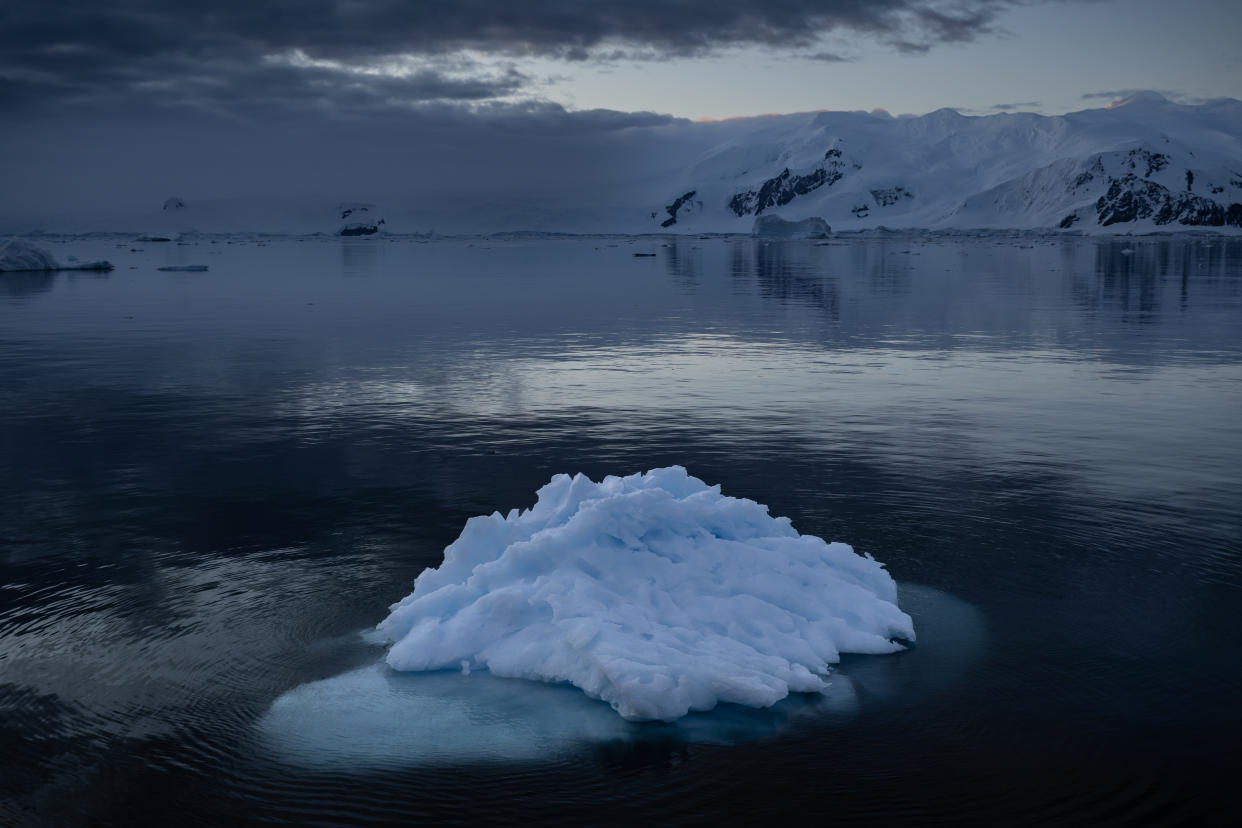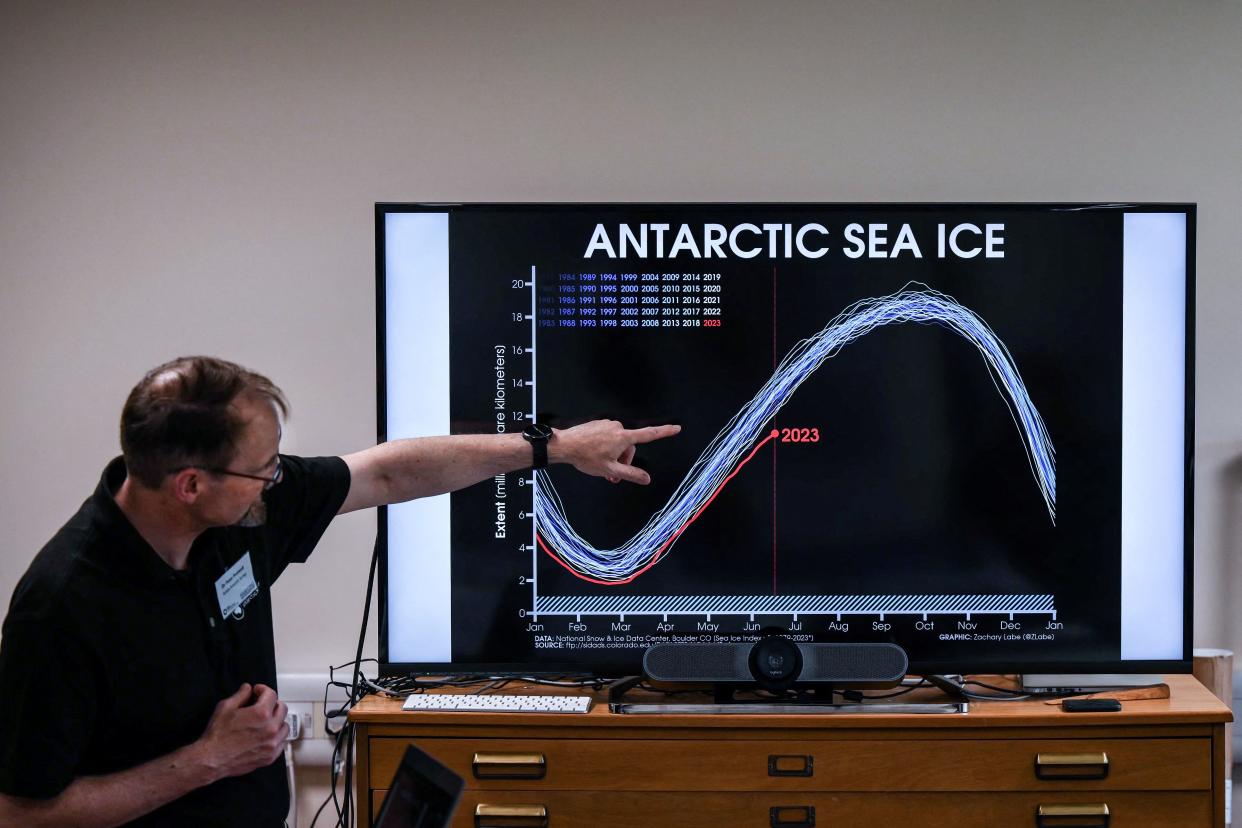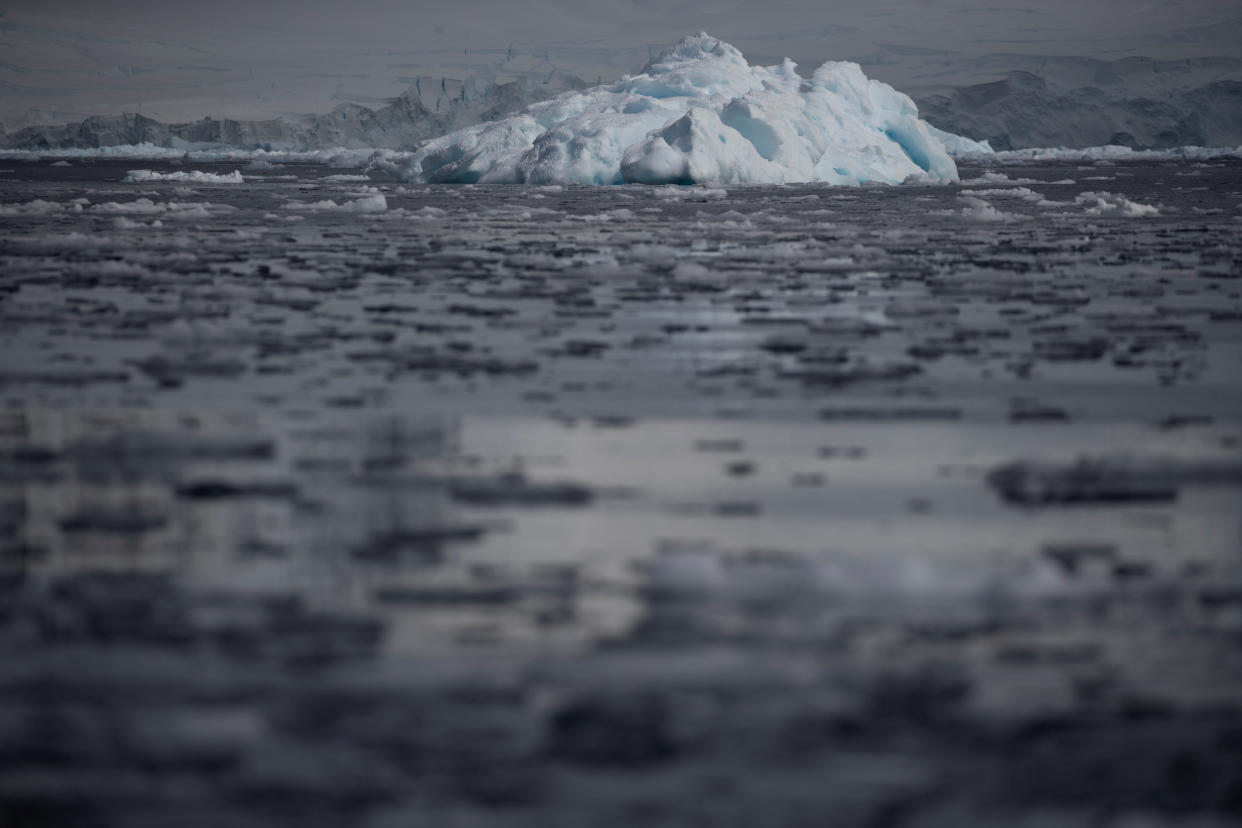Once in 7.5 million year event in Antarctica could have 'major impact' on global weather

The Antarctic is in the midst of a once in a 7.5-million-year winter, as sea ice surrounding the continent declines at a "concerning" rate which could have a "major impact" on the Earth's weather systems.
A scientist from the British Antarctic Survey (BAS) has told Yahoo News that such a steep deterioration could create a "feedback loop" - causing ocean temperatures to therefore get hotter and hotter.
Researchers have described the current situation the Antarctic Ocean as a "five-sigma" event – a significant deviation from normal conditions.
“A sigma is a standard deviation – so when we talk about a five-sigma or five standard deviation event, we’re saying that it’s five standard deviations outside the norm," says Dr Caroline Holmes of the BAS.
“Some things vary a lot naturally and others don’t, so by using this standard deviation measure, you’re taking account of that natural variability and saying how unusual something is.”
Read more: Europe fires: Which countries have been hit by wildfires in the past week?
Looking for polar climate visualizations? Start here: 📈📉
+ Arctic sea-ice extent: https://t.co/tBkW5GBgHF
+ Arctic sea-ice thickness/volume: https://t.co/qXpJKsA27B
+ Arctic temperatures: https://t.co/QEaNIX4gLG
+ Antarctic sea ice: https://t.co/V0Lt0w1sTipic.twitter.com/eHi8eXMrWH— Zack Labe (@ZLabe) September 18, 2022
“Even a two or a three-sigma event would be quite unusual, so a five-sigma event would be really remarkable."
Dr Holmes says that in the case of Antarctic sea ice – this form of measurement relies on 45 years worth of data due to the limited amount of time satellites have been measuring the entire continent to a reliable standard.
There are other methods to look back further in time, and although they are less accurate, Dr Holmes still says the longer-term records show that the current situation unfolding in the region is "concerning" and "very, very rare".
"It is obviously something that is a complete change from what we've seen before and it's something that is consistent with what we expect in a warming climate," she adds.

Every winter, ice in the Antarctic Sea replenishes as part of an annual cycle which affects both ocean temperatures and currents, which in turn affects weather patterns around the world and various ecosystems.
If this pattern continues to be disrupted, with less ice forming every year, then it could have a "major impact" down the line, says Dr Holmes.
"As Antarctic sea ice melts, you're taking away a reflective surface and replacing it with kind of a dark surface - the ocean's surface - which absorbs more heat," she says.
"This is what we call the albedo feedback effect, so as you melt the ice the ocean is exposed, it becomes warmer, it absorbs more heat from the sun and then that heats up the Earth more, which then means that it's harder for the ice to form."
Read more: Italy wildfires force airport to close as temperatures soar to 47C
Imagine what this graph might have looked like posted in 2016.
Now add on the years since then.
The long-term warming is obvious. Understanding internal climate variability is important too.
Arctic Data: GISTEMPv4 averaged over January to June for each year from 1979-2023 pic.twitter.com/ot38vWnVMl— Zack Labe (@ZLabe) July 24, 2023
Some scientists have suggested the Antarctic's sea ice may have progressed even further towards a six-sigma event, due to the rate of depletion in just the past few days. But Dr Holmes says the year-to-year data can vary slightly on different days of the year.
Asked if the overall change is down to human-driven carbon emissions, she said: "I think again we probably need a little bit more information before we can completely conclusively say that.
"But I think particularly now this kind of the slow rate that which it freezing this winter shows how much heat there is in the system that there wasn't before, so I think that definitely does point towards human influence."
Read more: Anger after tourists drive 4x4 onto protected beauty spot

She said researchers are further behind with Antarctica compared to other climate systems, but that they can still say that such a "sudden change" is "consistent with a warming climate and it's more in line with the kind of thing we expect to happen more in the future".
Ending with a glimmer of hope, the polar researcher said this decline is "not irreversible" because sea ice can in theory form back quite quickly.
However, it would take "a very long time" to get back to a level considered normal.
Earlier this month, the World Meteorological Organization (WMO) said sea ice levels in June were at their lowest since satellite observations began – at 17% below average.
Read more: The most polluted cities in Europe
"We're used to seeing these big reductions in sea ice in the Arctic, but not in the Antarctic. This is a massive decrease," Michael Sparrow, chief of the World Climate Research Programme, told reporters in Geneva.
"It is not only the surface temperature, but the whole ocean is becoming warmer and absorbing energy that will remain there for hundreds of years," the WMO said. "Alarm bells are ringing especially loudly because of the unprecedented sea surface temperatures in the North Atlantic."
Dr Holmes also warned that it's a different story for the Antarctic ice sheet – the largest bock of ice on Earth – which is at greater risk of permanent damage.
"It looks like on a shorter time scale – a decade or so – we could be entering a lower state of sea ice," she adds. "But it's not one we couldn't reverse if we were to reduce emissions and the amount of heat we're bringing into the system."


